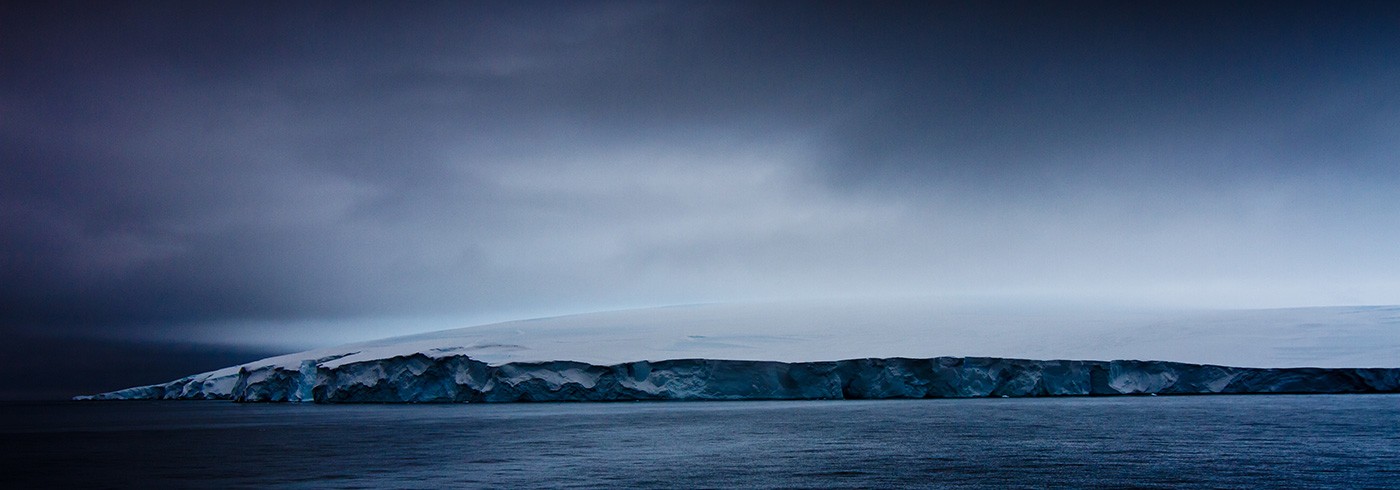Measurements were made directly from the icebreaker, and data was gathered from measurement instruments deployed in the ocean below the ice by previous expeditions. These data provide a unique time series of the hourly circulation of warm ocean water and meltwater from the glaciers over up to six years. A number of physical processes that can transport warm water in toward the glaciers will be studied using the time series in combination with satellite measurements, historical data, and oceanographic models.
Glaciers getting thinner
The large ice mass that lies bound to the continent of Antarctica has the potential to raise world ocean levels. The volume of the West Antarctic Ice Cap alone corresponds to a sea level increase of 5–6 metres. The areas of inland ice in Antarctica are gradually formed by accumulations of precipitation. This formation process is offset by the transport of ice in glaciers, which move slowly toward the sea. Glacial tongues that can measure up to 1,000 metres thick form where the glaciers debouch into the sea.
Observations in recent years have indicated that the flowing glaciers in West Antarctica are getting roughly five metres thinner each year. It has also been found that the glaciers are moving more quickly than before, and that the inland ice is becoming thinner at the coast. The biggest changes are seen in the glaciers that debouch into the Amundsen Sea, a region that is one of the least researched areas in the world’s oceans, due to its harsh climate and problematic ice conditions.
Antarctica is surrounded by warm, salty, and relatively heavy deep water, known as circumpolar deep water. One likely cause of the thinning of the glacial tongues is that they are melting from below because of the warm water circulating beneath them. Understanding how this circulatory process works is important to our ability to assess the future development of the West Antarctic ice cap.
Principal investigator
Anna Wåhlin
Department of Earth Sciences, University of Gothenburg

